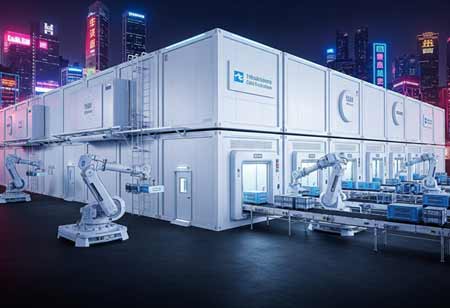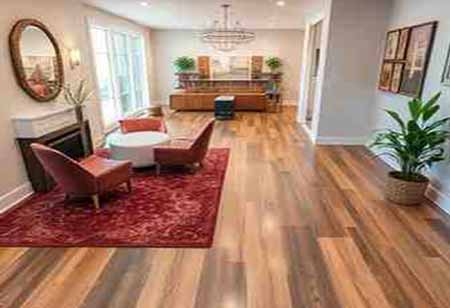Thank you for Subscribing to Construction Business Review Weekly Brief
Specials
- Apartment and Condominium Contractors Canada
- Decking Canada
- Architectural Glass Europe
- MEP APAC
- Construction Saudi Arabia
- German Apartment and Condominium Contractors
- Construction Law APAC
- Outdoor Construction
- Foundation Construction Canada
- MEP Canada
- Kitchen and Bath
- Cold Storage Construction APAC
- Precast Concrete Europe
- Construction Staffing Europe
- Pre-Construction Services
- Flooring System APAC
- Scaffolding Canada
- Swimming Pool Construction Canada
- Construction Management Canada
- Cold Storage Construction Canada
- Flooring Systems Europe
- Residential Construction
- Concrete Canada
- Construction Cladding Europe
- Construction Cladding APAC
- Concretes, Aggregates and Construction Materials APAC
- Concretes, Aggregates and Construction Materials Europe
- Commercial Contractors Europe
- Commercial Contractors APAC
- Dummy
- Construction Insulation, Coating and Waterproofing
- Construction Management APAC
- Landscaping Canada
- Construction Coating Europe
- Construction Tech Startups Europe
- Insulation Services Europe
- Mechanical Contractor Canada
- Mould Remediation and Testing Europe
- Swimming Pool Construction APAC
- Building Sealing Solutions Europe
- Construction Engineering Services
- Mechanical Electrical and Plumbing
- Roofing Systems Europe
- Architectural Glass APAC
- Startups APAC
- Construction Forensic and Owners Representative
- Flooring System
- Waterproofing APAC
- Wall Systems
- Safety and Compliance Europe
- Construction Bidding and Auctions
- Modular and Prefab Construction
- Architectural Glass
- Construction MENA
- Construction Demolition and Recycling Europe
- Modular Construction Europe
- Construction Interiors
- Steel Building APAC
- HVAC
- Doors and windows
- Construction Latam
- Building Information Modeling APAC
- Sustainable Construction APAC
- Building Restoration and Maintenance
- Commercial Contractors
- Specialty Construction
- Construction Engineering Canada
- Construction Engineering MENA
- Modular Construction Canada
- Modular Construction APAC
- Roofing and Siding Systems
- Workforce Management and Staffing
- Roofing Systems APAC
- Construction Consulting
- Steel Building Europe
- Construction Demolition and Recycling APAC
- Safety and Compliance APAC
- Concretes, Aggregates and Construction Materials
- Construction Cladding
The Rise of Modular Cold Rooms: Faster, Scalable, and Cost-Effective Solutions in APAC
Modular cold rooms are revolutionizing the cold chain logistics in the APAC region with their rapid deployment, scalability, and cost-effectiveness, thereby addressing the growing demand for temperature-sensitive goods.

By
Construction Business Review | Monday, June 30, 2025
Stay ahead of the industry with exclusive feature stories on the top companies, expert insights and the latest news delivered straight to your inbox. Subscribe today.
Fremont, CA: The Asia-Pacific (APAC) region, with its burgeoning economies, rapidly expanding urban centers, and increasing demand for fresh produce, pharmaceuticals, and other temperature-sensitive goods, is experiencing a transformative shift in its cold chain logistics. At the forefront of this evolution is the ascendancy of modular cold rooms, offering a compelling alternative to traditional fixed cold storage facilities due to their speed of deployment, inherent scalability, and undeniable cost-effectiveness.
One of the most significant advantages of modular cold rooms is their rapid deployment speed. Traditional cold storage facilities can take months, or even years, to design, permit, and construct. In contrast, modular units, built from pre-engineered components, can be assembled and brought into operation within days or weeks. This rapid turnaround is crucial for businesses in APAC that need to quickly respond to market fluctuations, seasonal demands, or sudden increases in storage requirements. For instance, a pharmaceutical company needing to store a new vaccine or a food distributor anticipating a peak harvest season can quickly deploy modular units without extensive downtime.
Scalability and Flexibility: Adapting to Change
The modular nature of these cold rooms provides unparalleled scalability. Businesses can start with a smaller unit and easily expand their cold storage capacity by adding more panels and refrigeration units as their needs grow. Conversely, if demand decreases, sections can be dismantled and even relocated, preventing over-investment in unused space. This "plug-and-play" capability offers businesses in the fast-paced APAC market the agility to adapt to evolving inventory levels, changing product lines, and even the relocation of operations —a flexibility that traditional fixed structures simply cannot match. This is particularly beneficial for businesses with fluctuating inventory or those that operate in temporary or leased spaces.
Cost-Effectiveness: A Smart Investment
Modular cold rooms offer a highly cost-effective solution throughout their entire lifecycle. Prefabricated components significantly reduce on-site labor and material costs compared to traditional construction methods. Furthermore, the quick installation minimizes business disruption and associated revenue loss.
Beyond initial investment, modular cold rooms are often designed with superior insulation and energy-efficient refrigeration systems. This translates to lower operational costs through reduced energy consumption, a critical factor given that electricity can comprise a significant portion of cold warehouse operating expenses. The ability to expand or contract as needed also means businesses only pay for the storage space they actively utilize, optimizing resource allocation and preventing wasteful expenditure on redundant capacity. Some reports even indicate a 30 percent cost reduction for companies implementing modular cold storage, alongside improved inventory control.
As the APAC region continues to experience rapid development, the demand for efficient, reliable, and adaptable cold chain solutions is expected to intensify. Modular cold rooms, with their inherent advantages in terms of faster deployment, unparalleled scalability, and significant cost savings, are poised to become the cornerstone of the region's cold chain infrastructure. The ongoing focus on reducing food loss, enhancing food safety, and ensuring the integrity of pharmaceutical products will further accelerate the adoption of these innovative solutions, cementing their position as a vital component in the future of cold chain logistics across the region.





